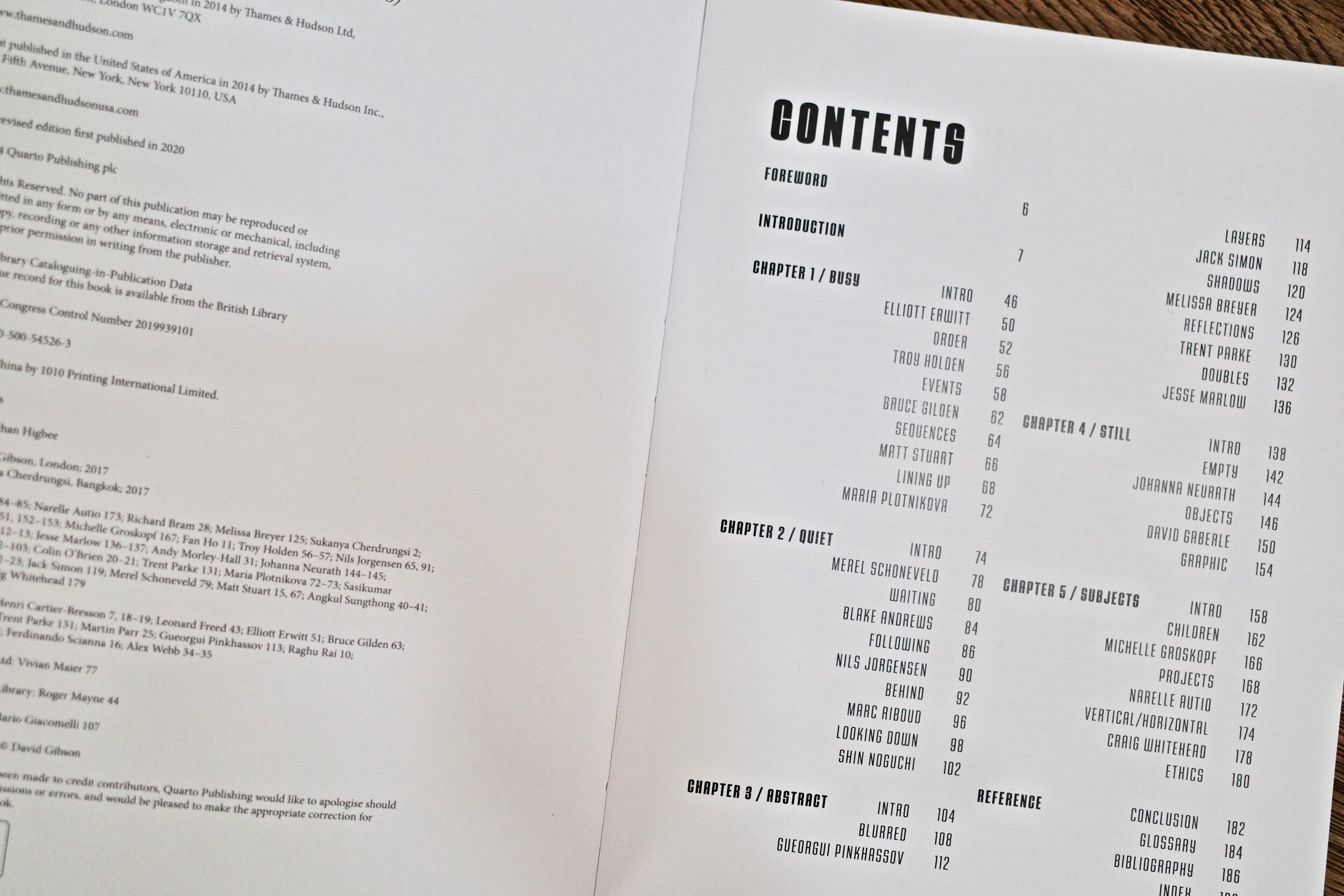The Street Photographer's Manual - Book by David Gibson
What is the ultimate street photography textbook? That is something I have asked myself a lot before. Well anyways, in case you might have the same question, I might actually have an answer for you. Let’s check out the new edition of the Street photographer’s Manual.
So today’s review is not gonna be about a photography book but rather about a book ABOUT the photography and particularly, you guessed it, street photography. The Street Photographer’s manual is a kind of guidebook, or textbook if you want, that will introduce you into the world of street photography. It was written by David Gibson, who is a British street photographer and writer. He has written two other books: 100 Great Street Photographs (2017) and Street Photography: A History in 100 Iconic Images (2019).
This video is not gonna be about him, but if you want to find out more definitely check out his Instagram and website.
Even though we are now in isolation, my days are basically same as before. When I am not at work or working from home, our new baby takes up the majority of my time. So I have very few hours left at the end of the day for “entertainment,” but still, this book made me put down my Nintendo and I finished it in like two days.
So what is this book about? This book consists of several categories, and is divided into five chapters. Each chapter includes an introduction, profiles, and projects. Now the book touches briefly on cameras, the history of street photography, and overall an introduction into the world of street photography. But if I should describe the book in one word it would be inspiration. It serves like a hub to satisfy your photography needs. I was honestly blown away by the volume of information it contains. I wasn’t even surprised when I found that Gibson has a Master’s degree in Photography. When I was reading the book and I was like, ok, ok, I already knew this, and then it twisted in a way I figured I only scratched the surface with what I knew. So even though I was convinced I would review the book and give it away, I have decided, after I took like 20 photo notes, I will just have to give away another copy and just keep this one.
So, this leads to a little complicated answer to a simple question, who is this book for? And the answer is, no matter what your photography level is, this book has something to give you. For someone who just started with photography, you probably will not know all the names and styles, but it will give you directions where to look if you want to. For someone in the middle of the skill scale it will connect a lot of dots and it will also add a lot of new dots. Maybe a better question would be, who is the book not for? Then I have to say that even if you are just a regular photographer who doesn’t care about the street style at all, still the book has something to give you. But let’s say you are a professor of photography, you specializeion street style. You read a lot of professional literature. Then the book would probably be only scratching the surface. So if those like five people are watching right now I would say do not buy the book. But if you are not one of those five, I can only recommend it, especially for that killer price. But I have to warn you: It will suck you into the world of street photography and you may end up even thirstier for information than before.
So what this book will not give you? It is not a manual in a sense of providing you with composition techniques. It will not tell you like, Position your subject here because of the dynamic symmetry, and so on. And I feel like it doesn’t really matter that much, because there are other books focusing on photography techniques. Even though I said it will give something to complete beginners, what you will not find here are the very basics like, how the ISO works, what is shutter speed, and so on.
Now let’s talk about some “technical” stuff. The book was published two months ago and it is a second edition. This new edition includes new photographs and six new profiles. Essentially it is the same book as the original from 2014, but refreshed and updated. The book has been hugely popular, a world-wide best seller and translated into 8 languages. It has 192 pages and over one hundred photographs. The foreword was written by Matt Stuart, one of my favourite Leica photographers. What I also like is the shape factor. The size is 18 by 23 cm which roughly is a size of an iPad. And yes, it fits into a regular Ikea cabinet.
Gibson was given the basic framework of 20 projects and 20 profiles. He decided all the content from there. He wanted to separate the different approaches, for the reader and himself.
Gibson wants his readers to become more inspired and curious to know more about some of the photographers mentioned or profiled in the book. According to him, the essence of the book is to connect with people by catching them at a critical point — as they start their interest in street photography. I have to say if that was something he wanted to achieve, he did very well.
